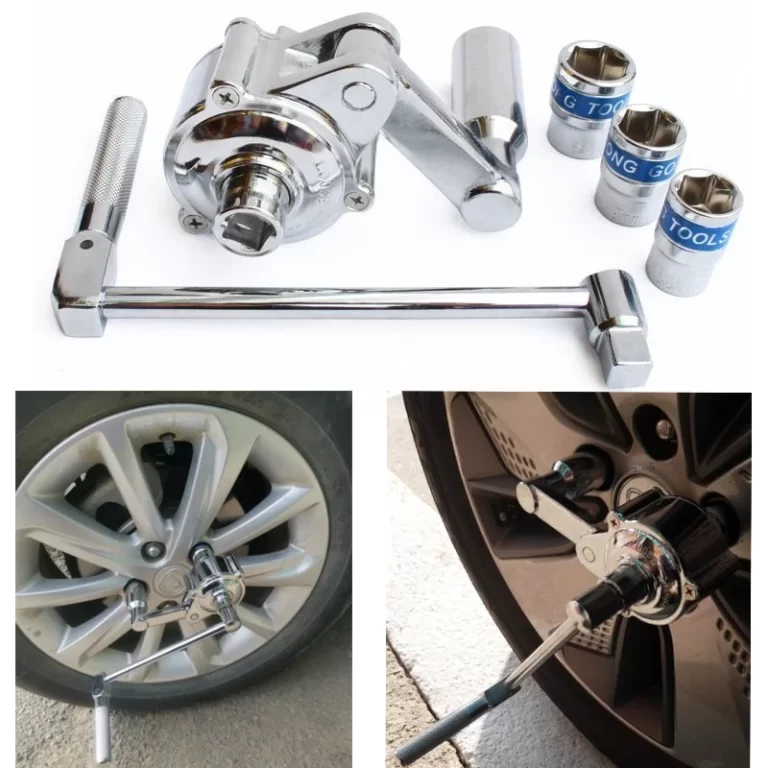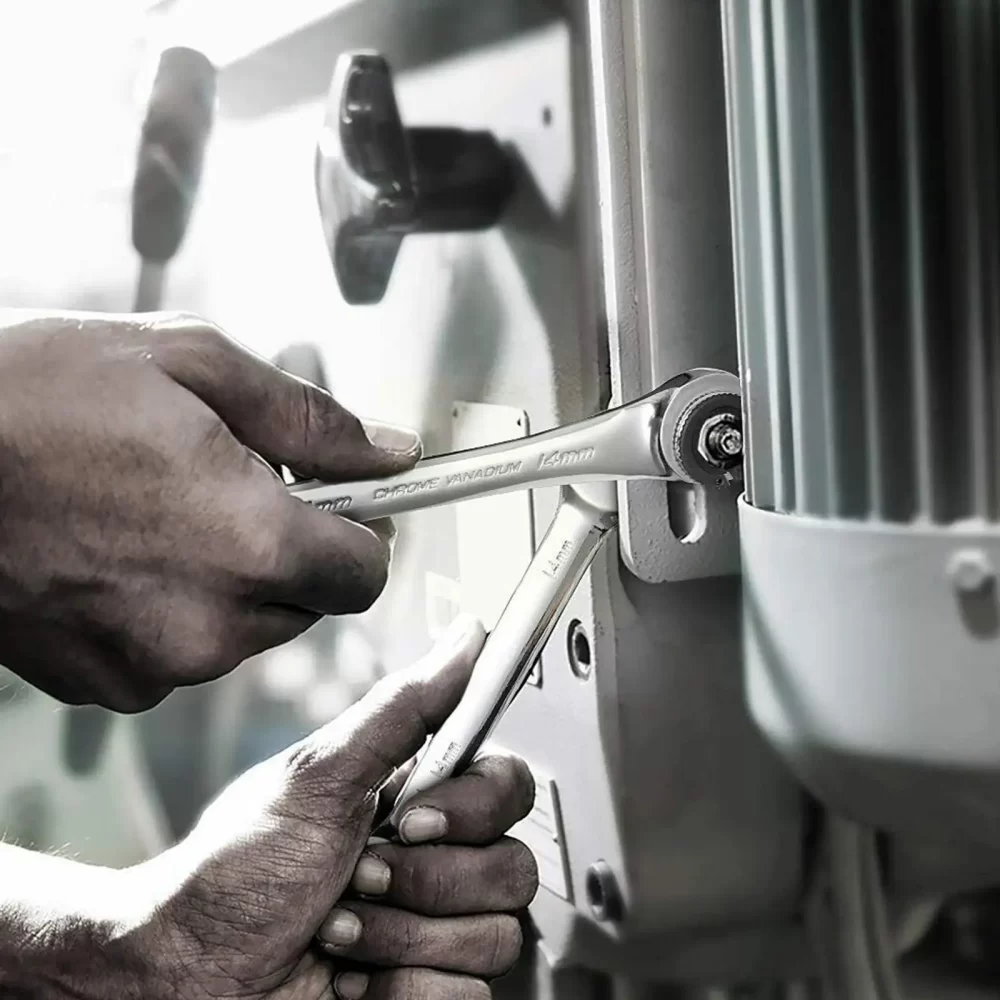
Benefits of Open End Ratchet Wrench Over Traditional Wrenches
An open end ratchet wrench is a powerful hybrid tool that combines the speed of a ratchet with the accessibility of an open-end wrench. This innovative design allows mechanics and DIYers to tighten or loosen fasteners quickly in tight spaces where a traditional socket wrench won’t fit. Moreover, the open end ratchet wrench features a built-in ratcheting mechanism in the open end itself. You no longer need to lift and reposition the wrench after each turn. Instead, you can keep turning continuously in one direction.
Also, this tool saves time during repetitive tasks. Whether you’re working on car engines, bicycles, or home appliances, it reduces hand fatigue significantly. The ability to maintain grip and motion increases efficiency. In addition, many models include reversible gear systems. Flip a switch to change from tightening to loosening. There’s no need to remove the wrench from the bolt. These wrenches come in various sizes. Common sets range from 8mm to 19mm. Some brands offer adjustable versions for broader compatibility.
Materials matter too. High-quality chrome vanadium steel ensures strength and durability. Polished finishes resist rust and improve grip. Furthermore, ergonomic handles enhance comfort. Cushioned grips reduce slippage and pressure on palms. Long-term use becomes less tiring. Many professionals now prefer the open end ratchet wrench over standard tools. Its versatility makes it ideal for automotive, plumbing, and industrial applications. By the end of this guide, you’ll understand why every toolbox should include an open end ratchet wrench.
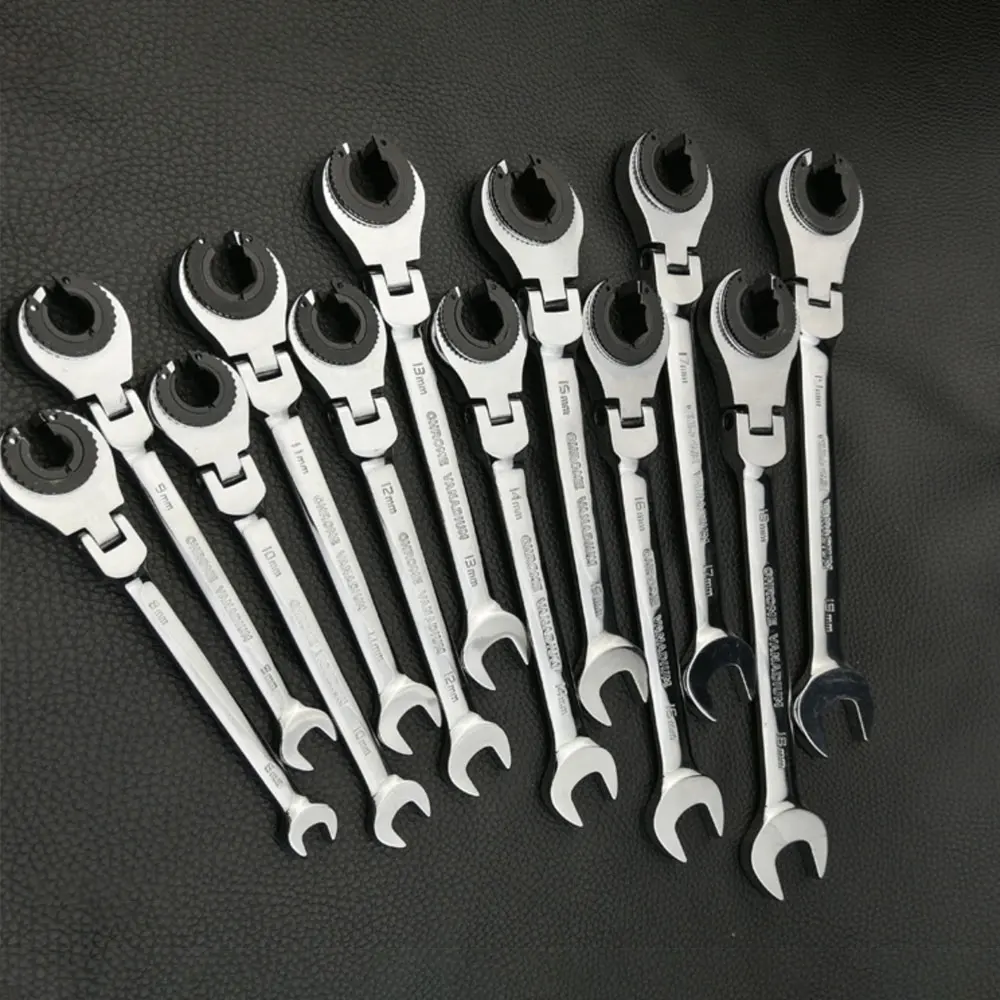 What is an Open-End Ratchet Wrench?
What is an Open-End Ratchet Wrench?
An open end ratchet wrench is an essential hand tool for mechanical tasks. It combines the traditional open-ended wrench with a ratcheting mechanism for enhanced usability.
Definition and Features
An open end ratchet wrench has an open end on one side to grip bolts or nuts. Unlike closed or box wrenches, it doesn’t fully encircle the fastener. This open design allows easy insertion in tight spaces. The ratcheting mechanism enables movement without removing the wrench after each turn. It smoothly tightens or loosens fasteners with less effort.
Key features include:
- Open-ended design for accessibility in confined areas.
- Ratchet system for efficient operation.
- Durable materials like steel for long-lasting use.
- Narrow profile for accessing hard-to-reach fasteners.
How it Differs from Other Wrenches
The open end ratchet wrench stands out from standard wrenches and socket wrenches. Traditional open wrenches lack the ratcheting mechanism. They require the user to manually reset the wrench after each turn. Socket wrenches have a fully enclosed design but might not fit in tight spaces.
Compared to adjustable wrenches, open end ratchet wrenches do not require jaw adjustments. This saves time and provides a faster operation. They are particularly useful for repetitive tasks in tight spaces where efficiency is crucial.
Benefits of Using an Open-End Ratchet Wrench
An open end ratchet wrench offers numerous benefits that make it a valuable tool for professionals and DIY enthusiasts alike. These benefits enhance productivity and convenience during tasks.
Efficiency in Tight Spaces
The open-ended design of the wrench allows for access in confined areas. Traditional wrenches often struggle to reach bolts in narrow or awkward places. However, the open end ratchet wrench provides a solution by securely gripping fasteners without fully surrounding them.
The ratcheting mechanism further increases efficiency. You can turn fasteners in tight spaces without lifting the wrench after every turn. This smooth operation reduces effort and saves time. It is particularly helpful in tasks that involve hard-to-reach areas, like working on machinery or behind panels.
The narrow profile of the wrench also contributes to efficiency. It fits where bulky tools cannot, enabling users to complete jobs that require precision.
Time-Saving Features
Open end ratchet wrenches are designed to save time during tasks. The ratcheting system eliminates the need to reposition the tool repeatedly, streamlining operations. This is especially useful in repetitive jobs where every second counts.
Unlike adjustable wrenches, they do not need jaw adjustments. This allows users to focus entirely on tightening or loosening, reducing time wasted on settings.
The ability to quickly change directions without removing the wrench from the fastener adds to efficiency. Whether working on nuts, bolts, or other fasteners, this feature makes the process simpler and faster.
These practical features make the open end ratchet wrench a preferred choice for professionals. Investing in this tool enhances both speed and precision during work, proving its value in various applications.
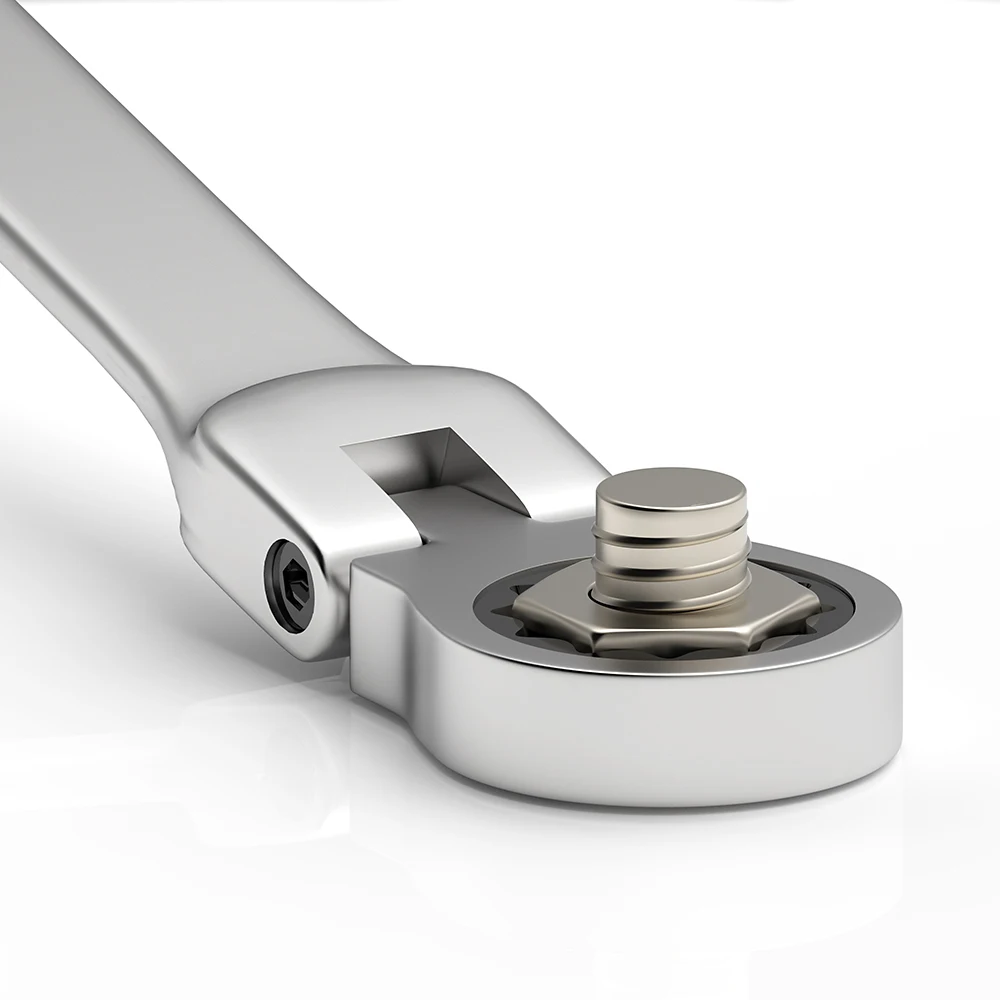 Types of Open-End Ratchet Wrenches
Types of Open-End Ratchet Wrenches
The open end ratchet wrench comes in various types to meet specific needs. Each type offers unique benefits for different tasks. Understanding these variants helps users select the right tool for their requirements.
Standard Open End Ratchet Wrench
The standard open end ratchet wrench is the most common type. It features an open-ended jaw and a built-in ratcheting mechanism. This design allows quick tightening or loosening of fasteners.
Key features include:
- Fixed jaw size for specific fastener dimensions.
- Simple design suitable for general tasks.
- Durable build for heavy-duty applications.
This type works best for repetitive tasks in confined spaces. Professionals often rely on it for its efficiency and reliability.
Adjustable Open End Ratchet Wrench
An adjustable open end ratchet wrench has a jaw that fits multiple fastener sizes. It combines flexibility with the convenience of ratcheting motion.
Advantages include:
- Versatility for bolts and nuts of various sizes.
- Reduced need for carrying multiple wrenches.
- Time-saving mechanism, eliminating jaw adjustments each time.
This wrench is ideal for situations requiring tools adaptable to varying fasteners. It’s especially useful for DIY enthusiasts and repair tasks at home.
Specialized Designs for Unique Applications
Some open end ratchet wrenches are designed for specific tasks or industries. These specialized designs include unique features tailored to particular applications.
Examples include:
- Insulated wrenches for electrical work.
- Extra-long wrenches for extended reach.
- Slim-profile wrenches for extremely tight spaces.
These variations are highly beneficial for users in specialized fields like automotive repair or plumbing. Choosing a specialized design improves efficiency and safety in specific tasks.
In summary, selecting the right type of open end ratchet wrench ensures better performance and meets your task demands. Explore the variants to find the tool that suits your needs best.
How to Choose the Right Open-End Ratchet Wrench
Selecting the right open end ratchet wrench is crucial for efficient and precise work. The choice depends on the tasks at hand and the tool’s specific features. Below are the key areas to consider when buying an open end ratchet wrench.
Key Factors to Consider
- Size and Compatibility
- Ensure the wrench fits the fastener sizes you regularly work with.
- Choose adjustable models for variable-sized fasteners.
- Durability and Material
- Opt for wrenches made of high-quality, durable materials like chrome vanadium steel.
- Sturdy construction ensures longevity, even in heavy-duty use.
- Ergonomic Design
- Check for a comfortable handle for prolonged use.
- Lightweight wrenches reduce user fatigue during repetitive tasks.
- Ratcheting Mechanism Quality
- Look for a smooth and reliable ratcheting action.
- High-quality mechanisms ensure seamless operation and prevent slipping.
- Special Features
- Slim-profile models work well in tight spaces.
- Insulated wrenches provide safety for electrical work.
Popular Brands and Models
Some brands are renowned for producing reliable and effective open end ratchet wrenches. Here are a few popular options:
- Snap-on: Known for premium tools with robust build quality and precision engineering.
- GearWrench: Offers versatile models with innovative features at reasonable prices.
- Tekton: Creates durable wrenches suitable for diverse applications.
- Craftsman: Famous for reliability and long-lasting performance in automotive and household tasks.
These brands provide choices across various price ranges and feature sets. Researching customer reviews can help you choose the right model for your needs.
By assessing these factors and exploring trusted brands, you can find the ideal open end ratchet wrench for your tasks.
 Proper Usage and Maintenance Tips
Proper Usage and Maintenance Tips
Using and maintaining your open end ratchet wrench properly extends its lifespan and ensures safety. Adhering to basic guidelines can make the tool last longer and function more efficiently.
Guidelines for Safe Operation
- Inspect Before Use
- Check for cracks or wear on the wrench. Do not use a damaged tool.
- Select the Right Size
- Use the correctly sized wrench for your fastener to avoid slipping or damage.
- Apply Controlled Force
- Do not overforce or hammer the wrench. Use gentle, steady pressure to avoid breakage.
- Avoid Overloading
- Stick to the wrench’s defined capacity. Overloading can compromise the ratcheting mechanism.
- Wear Safety Gear
- Use gloves and goggles, especially for mechanical or industrial applications, to prevent injuries.
Following these safety measures minimizes risks and ensures better productivity.
Cleaning and Storage Practices
- Clean After Each Use
- Wipe the wrench with a damp cloth to remove dirt or grease.
- For stubborn residue, use mild soap and water, then dry completely.
- Lubricate the Mechanism
- Regularly apply a light machine oil on the ratchet mechanism for smooth operation.
- Store Properly
- Keep the wrench in a dry, clean toolbox to prevent rust or corrosion.
- Use protective covers if available, especially in humid environments.
- Avoid Harsh Conditions
- Do not store the wrench in damp or excessively hot areas. This can weaken the materials.
- Periodic Inspection
- Check for wear and tear. Tighten loose bolts or replace damaged parts if needed.
By maintaining your open end ratchet wrench well, you ensure it remains reliable and performs optimally across tasks.
Common Applications for Open-End Ratchet Wrenches
Open end ratchet wrenches excel across various applications. Their design and functionality ensure versatility.
Automotive Repairs
These wrenches are indispensable for vehicle maintenance. They help access tight engine spaces. Mechanics use them to loosen or tighten bolts without repositioning the wrench. The ratchet mechanism saves time during repetitive tasks like assembling or dismantling components. Their slim profile ensures ease of use around exhaust systems and engine mounts. Professionals trust them for efficient and precise automotive work.
Plumbing and Pipe Fitting
In plumbing, confined spaces are common. Open end ratchet wrenches provide easy access under sinks or behind pipes. Plumbers use them to secure bolts on fixtures or connectors. Their ratcheting motion ensures quick adjustments, even in cramped areas. Adjustable models are ideal for varying fastener sizes common in plumbing jobs. These wrenches are crucial for both repairs and installations.
General Home Improvement Tasks
Open end ratchet wrenches are highly useful for DIY projects. They assist in assembling furniture, installing shelves, or securing fixtures. Homeowners value their ease of use and efficiency. Adjustable versions reduce the need for multiple tools. Whether mounting brackets or tightening screws, they simplify tasks around the house. Their compact size makes them ideal for everyday repairs.
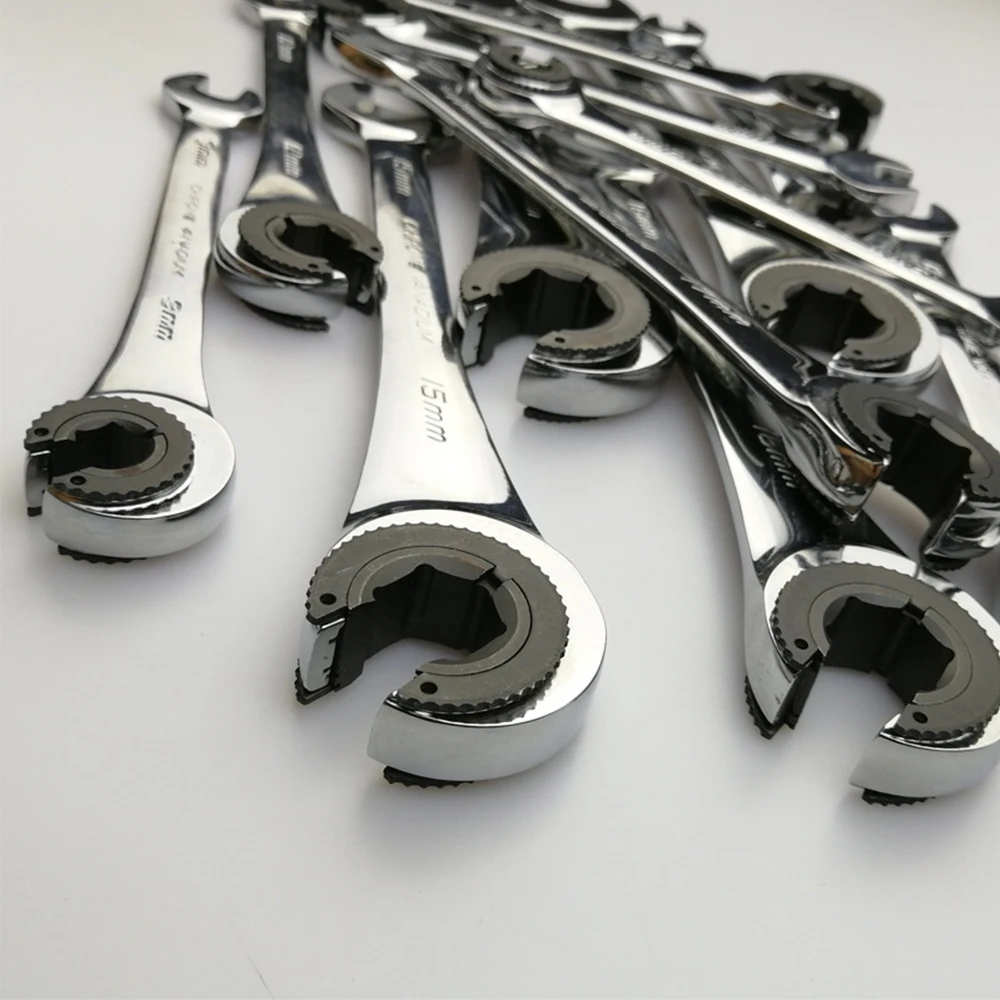 Troubleshooting and Repairs
Troubleshooting and Repairs
Understanding common issues and knowing when to replace your open end ratchet wrench can ensure optimal performance. Regular troubleshooting can enhance the tool’s lifespan and save repair costs.
Common Issues and Solutions
- Slipping Ratcheting Mechanism
- Issue: The ratchet skips or fails to engage.
- Solution: Clean and lubricate the mechanism. Replace worn-out internal parts if needed.
- Cracked or Damaged Jaws
- Issue: Jaws lose grip or break under high pressure.
- Solution: Avoid using the wrench on oversized fasteners. Replace it if cracks appear.
- Rust or Corrosion
- Issue: Exposure to moisture causes rust, hindering operation.
- Solution: Clean the wrench thoroughly after use. Store it in a dry area.
- Locking Issues in Adjustable Wrenches
- Issue: Adjustable jaws fail to lock properly.
- Solution: Tighten or replace the adjustment screw to restore locking functionality.
- Worn Grip or Handle
- Issue: The handle becomes slippery or uncomfortable to use.
- Solution: Replace grips or use gloves for extra comfort and control.
Resolving these issues promptly ensures safety and efficiency during tasks.
When to Replace Your Wrench
- Excessive Wear and Tear
- Replace the wrench when ratcheting mechanisms or jaws show visible damage.
- Loss of Functionality
- If repairs fail, get a new wrench for consistent operation.
- Rust and Corrosion Damage
- Severe rust weakens the tool. Replace it to prevent accidents.
- Expansion in Requirements
- Upgrade if existing wrenches cannot handle new or specialized tasks.
By addressing common issues and knowing when to replace your wrench, you’ll maintain both safety and productivity.
Frequently Asked Questions
Can I use an open end ratchet wrench on stripped bolts?
No. Damaged fasteners need specialty tools. Use extractors or six-point sockets instead.
Is it safe for high-torque applications?
Only moderate torque. For heavy loads, use a breaker bar or impact wrench.
Can I wash it in a parts cleaner?
Not recommended. Solvents may degrade internal lubricants. Hand wipe only.
Are replacement parts available?
Limited. Some brands sell internal kits. Others require full replacement.
Does it work on square nuts?
Yes. Flat sides engage properly. Roundness does not affect function.
Can left-handed people use it?
Yes. Most models reverse easily. Thumb switch works for either hand.
Is it compatible with extensions?
No. Design doesn’t allow attachments. Use directly on the fastener.
Do they come in beam-style versions?
Rarely. Torque measurement isn’t typical. Use separate gauges if needed.
 Final Thoughts
Final Thoughts
The open end ratchet wrench is a game-changer for anyone who works with fasteners. It blends convenience, speed, and access in one smart design.
From home repairs to professional garages, its value is undeniable. Tasks that once caused frustration now feel effortless.
Its ability to stay on the nut while ratcheting saves countless motions. Reduced fatigue means longer, more productive sessions.
Top brands ensure durability and precision. With proper care, it lasts for years.
Whether you’re changing oil, fixing brakes, or assembling furniture, this tool helps. It deserves a permanent spot in every toolbox.
So, if you’ve ever struggled with tight spaces or slow progress, consider upgrading. Let the open end ratchet wrench transform your workflow today.
